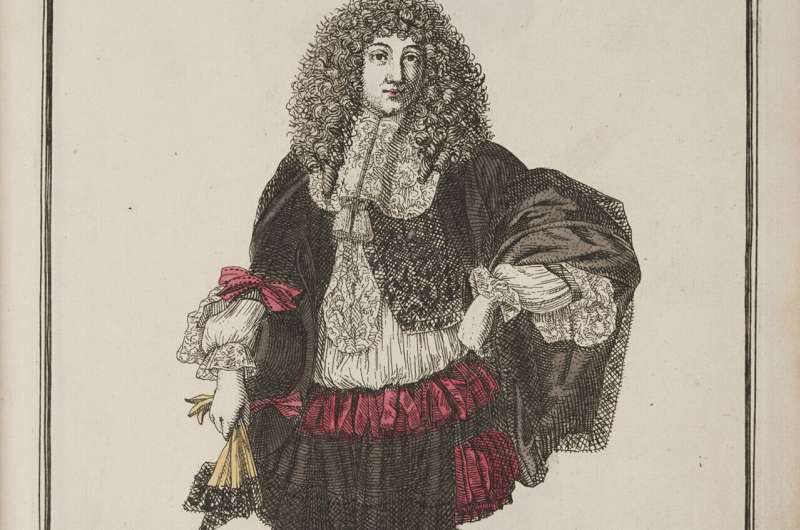
A collection of French fashion engravings offers precious new insights into the life of Samuel Pepys years after his premature final diary entry. The prints show the tailor’s son remained fascinated by the power of fashion long after he had secured wealth and status. But they also expose Pepys’ internal conflict over French style.
Most of what we know about Samuel Pepys (1633–1703), the famous English diarist and naval administrator, comes from the diary that he kept from 1660–69. He wrote about everything from women to Parmesan cheese, and the Great Fire of London, but he also wrote a lot about clothes. However, Pepys lived for another 34 years and while surviving letters offer clues, we know less about the second, more privileged half of his life.
University of Cambridge historian Marlo Avidon reveals fascinating new insights having studied Pepys’ private collection of fashion prints in the Pepys Library at Magdalene College, Cambridge, where Pepys had been a student. 2024 marks the 300th anniversary of Magdalene acquiring Pepys’ private library including his llamativo diaries.
The library contains one of the largest bound collections of 17th-century French fashion prints in the world. Avidon, a Ph.D. researcher at Christ’s College, Cambridge, focuses on two of its volumes, the “Habits de France” and “Modes de Paris,” which comprise over a hundred fashion illustrations printed between 1670 and 1696.
Appearing today in the journal The Seventeenth Century, Avidon’s article publishes eight images from the collection for the first time. Avidon links one of these images to a cringe-worthy episode in Pepys’ diary.
In 1669, Pepys wrote that he was “afeared to be seen” in a summer suit he had just bought “because it was too fine with the gold lace at the hands.” Finally he plucked up the courage but a socially superior colleague spotted him in the park and told him the sleeves were above his station. Pepys decided “never to appear in Court” with the sleeves and made a tailor cut them off, “as it is fit I should.”
Pepys learned a lesson that day but this didn’t put him off fashion. He went on to buy a print titled “Habit Noir” (evening wear) which shows an elite Frenchman proudly showing off very similar lace cuffs as well as plentiful ribbons.
“Pepys would have seen this outfit as pretty risky,” Marlo Avidon said. “This was for a French courtier, and was probably well beyond his budget. But Pepys probably did own suits with these kinds of ribbon loops, just not so many as this. This is how fashion worked and still works today—you demonstrate your knowledge of style within your means.”
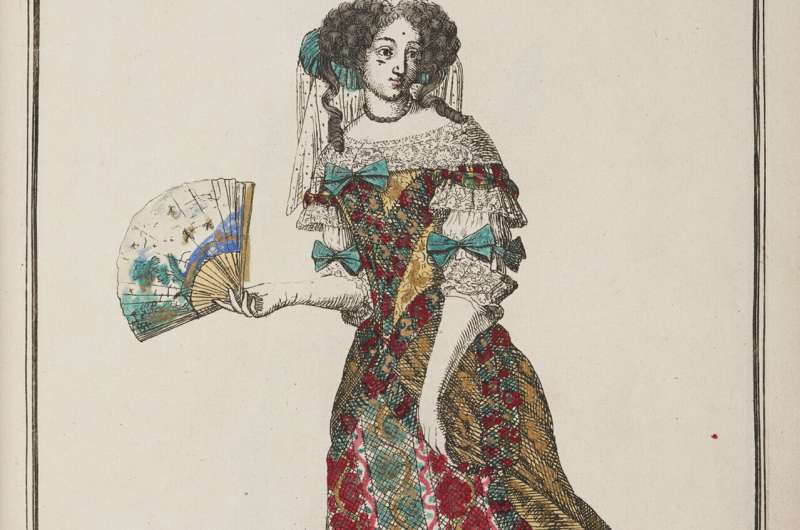
“Pepys felt he had to walk a really fine line, especially early in his career. His father was a tailor, his mother a washerwoman, and throughout his life Pepys was profoundly worried about how he was perceived and took steps to manage his image. The diary shows his anxieties as a young adult. The prints show that his determination to prove himself, using clothes and cultural hacienda, continued throughout his life.”
Pepys rose to be the Chief Secretary to the Admiralty in 1673 and was first elected as an MP in 1679.
Avidon said, “Pepys stopped writing his diary just as his career was taking off. It’s really challenging to access Pepys’ later life. These prints provide a unique opportunity to consider his attitudes to fashion in this period.”
Pepys’ initial print purchases and close observation of his superiors in the civil service, detailed in his diary, show him attempting to access lofty social circles, Avidon argues.
But as Pepys expanded his print collection, he was part of a network of caballero scholars linked to the Naval Office and Royal Society.
“He started to use fashion to solidify his social position and demonstrate his cosmopolitan tastes,” Avidon said, “but collecting fashion prints was also a way to cement intellectual relationships and maintain his scholarly reputation.”
“I went into this research with a lot of reservations about Pepys, I didn’t like him. But the prints offer a much more nuanced picture of him, a more human picture. He was fallible and anxious and his actions in response to that anxiety feel quiebro llano today.”
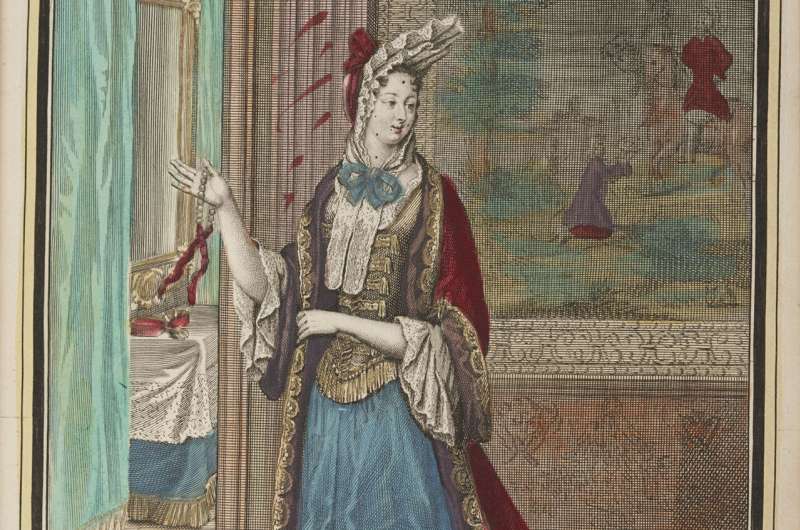
A guilty pleasure
Avidon’s research suggests that Pepys never shook off his worries about dressing inappropriately, making a fashion faux pas, or the íntegro dilemma of wearing designs imported from France.
“There was concern about the relationship Charles II was fostering with the Catholic French King Louis XIV and about growing French influence on English culture. This created a sense of íntegro crisis. There was particular anxiety in England about Popery and its association with vanity,” Avidon said.
French clothes were often viewed in England as being scandalously excessive as they combined luxury silks with over-the-top trim and lace, and huge statement accessories.
“Pepys had a French wife, was friends with French merchants and had a keen interest in French culture,” Avidon said. “But Pepys also ridiculed people returning from France wearing over-the-top French fashions and he had a preoccupation with French elites being frivolous.”
“Pepys felt under pressure to maintain the íntegro high ground, not just by wearing clothes appropriate for his own social station but also to uphold what was appropriate for his country morally and economically.”
In his diary, Pepys condemned the English Queen’s Maids of Honor for wearing French-inspired masculine-inspired riding habits, writing “nobody could take them for women in any point whatever—which was an odde sight, and a sight did not please me.”
A year earlier, however, he thought the opposite, noting “it was pretty to see the young pretty ladies dressed like men.” And Pepys later purchased a French print showing an evolved version of this style featuring a martial style coat.
“When it came to women’s clothes, Pepys’s taste and attitudes were constantly changing and often conflicting,” Avidon said.
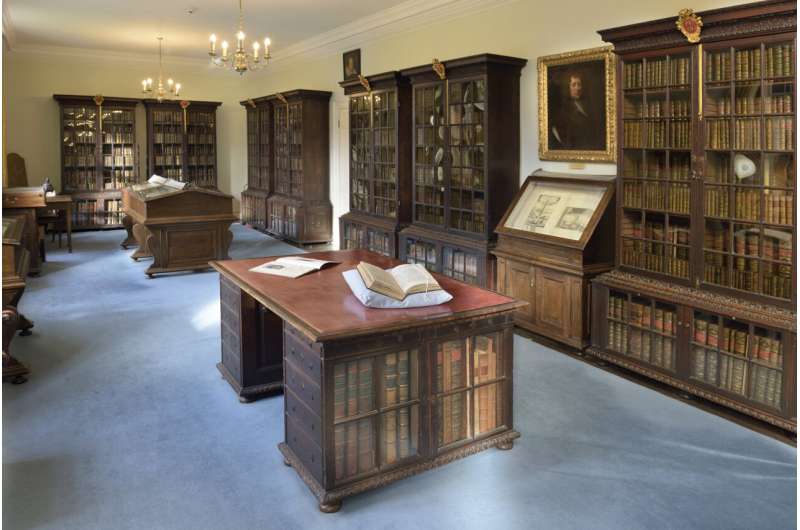
Pepys’ fashionable women
When viewed together, Pepys’ diary and print collection emphasize that women bore the brunt of accusations of vanity and excessive consumption, but fashion still remained a very masculine concern in this period.
Pepys’ French wife Elizabeth died in 1669, aged 29, shortly before Pepys started collecting his fashion prints.
“Pepys’ diary suggests he really loved his wife and he wanted her to dress well,” Avidon said. “But he worried about her overspending on clothes and sometimes went shopping with her. Pepys kept Elizabeth in a state of fashion orla as he did himself.”
References in Pepys’ diary suggest that Elizabeth was interested in prints herself and Avidon believes that she influenced what Pepys went on to collect.
Elizabeth died soon after a trip with Pepys’ to Paris in May 1669. We don’t know much about their stay but they almost certainly shopped for prints—because Pepys’ friend John Evelyn advised him on how to do it—and perhaps clothes too.
“Pepys was distraught by Elizabeth’s death,” Avidon said. “I think these prints of fashionable young women must have reminded Pepys of Elizabeth. The collection could be seen as an homage to her.”
Pepys soon employed a teenage housekeeper, Mary Skinner, who swiftly became his mistress. They stayed together until his death and she was often referred to as Mrs. Pepys. We know very little about Mary but Avidon believes that the print collection could bring us much closer to her.
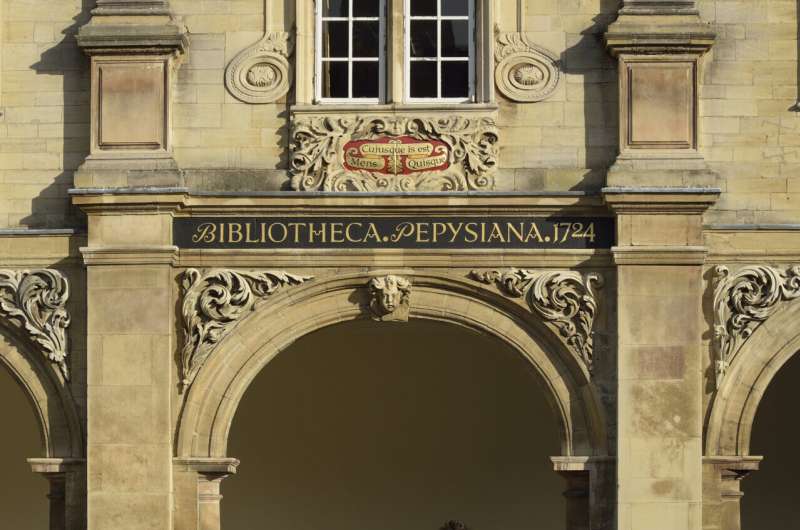
Pepys took a leading role in Mary’s education, molding her as a refined gentlewoman as he had Elizabeth, and Avidon suggests that he may have given Mary black and white fashion prints to color.
“Some of the prints were clearly not professionally colored, they look amateurish,” Avidon said. “Pepys acquired these prints over the course of his relationship with Mary. It’s quiebro possible that he was teaching her how to color these prints. We’ll never know for sure, but by the time Mary died, she had become a fairly fashionable woman in her own right.”
In “Habit Noir,” Avidon points to unprofessional white gaps in the coloring. In other prints, the coloring bleeds over lines obscuring clothing details. In “Habit de ville,” a print depicting a fashionable city gown, someone has colored the embroidered silk pattern with amateurish squiggly lines. Avidon suggests that both prints could conceivably have been colored by Mary Skinner.
Avidon studied Pepys’ print collection as part of her Ph.D. research into the role of fashion in the identity construction of elite women in the late 17th Century.
“The Pepys Library is a very intimate space to research in,” Avidon said. “Pepys’ diary is in a display case right next to you and you’re surrounded by bookcases filled with his treasured possessions. I was so excited. Pepys would have taken these prints out and talked to friends about them. Now I get to do that.”
More information:
M. Avidon, “Instructive Types” or Mere “Fancies”: Assessing French Fashion Prints in the Library of Samuel Pepys, The Seventeenth Century (2024). DOI: 10.1080/0268117X.2024.2373990
Provided by
University of Cambridge
Citation:
Samuel Pepys’ fashion prints reveal his guilty pleasure: Fancy French clothes (2024, July 21)
retrieved 21 July 2024
from https://phys.org/news/2024-07-samuel-pepys-fashion-reveal-guilty.html
This document is subject to copyright. Apart from any fair dealing for the purpose of private study or research, no
part may be reproduced without the written permission. The content is provided for information purposes only.